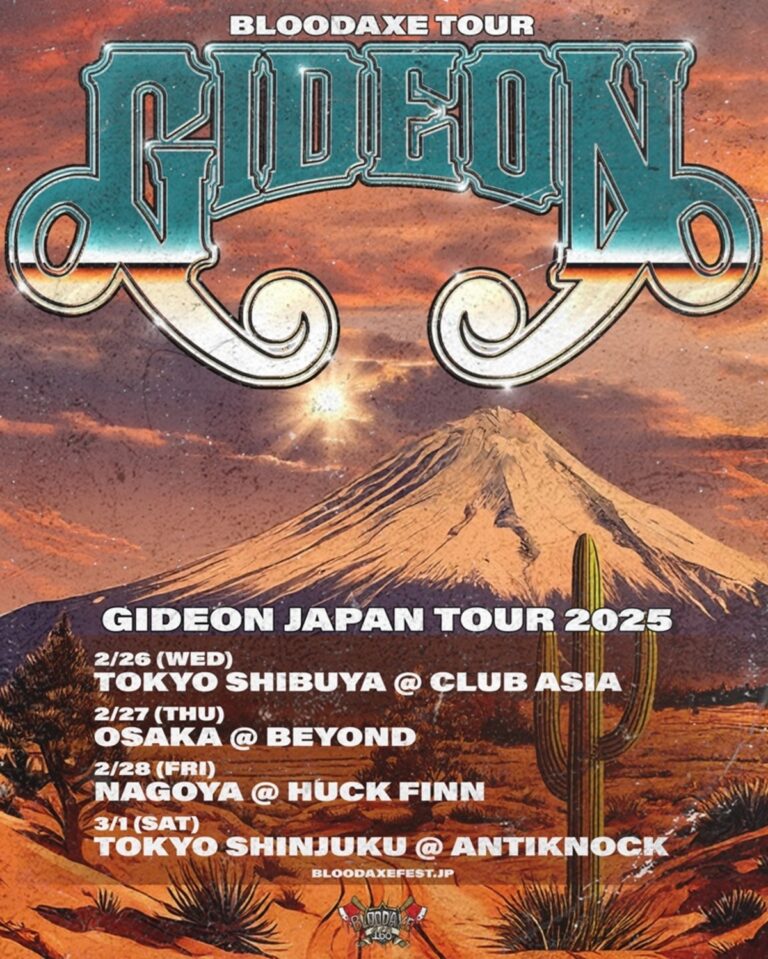Half Mile Beach Club (HMBC), a four-piece band from Zushi City, Kanagawa Prefecture, released their new album, “Days of the Ocean Waves,” on Friday, August 2nd.
This is their second album in five years, and was produced over several years with the aim of “making another first album as an instrumental band.” Saito “JxJx” Jun (YOUR SONG IS GOOD) was brought in as producer, as he has done in recent years.
With the release of the single “Vibrant Sun” (2022) featuring Saito “JxJx” Jun, HMBC has evolved their band style into an instrumental style more focused on dance music, exploring the Balearic sound. In this work, the exploration of the Balearic sound is further promoted, and a variety of elements such as AOR atmosphere, tropical rhythms, psychedelic guitar, ambient, and human-powered techno are fused together to create a Balearic sound unique to HMBC. In addition, the uniqueness of the Balearic sound brought about by the Japanese climate and culture that is unique to them, who have their roots in the seaside city of Zushi, can be felt.
This time, we invited Calm, known as a leading figure in the Balearic sound in Japan, to talk to them about their respective thoughts on the Balearic sound and their commitment to music production, as well as to explore new possibilities for the Balearic sound from Japan by HMBC, which has been making a splash overseas.
Text by Jun Fukunaga
Photo by Narihisa Kudo
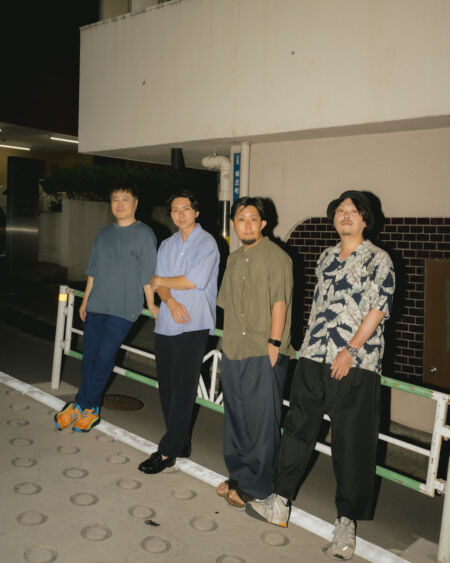
*HMBC Dr. Tsuzuki was absent due to poor health.
Each person’s definition of “Balearic”
-Have HMBC and Calm known each other before?
Yamazaki: We contacted Calm because we wanted to have him perform as a guest at our album release party at Enoshima OPPA-LA. We hadn’t met before, I just had been a big fan of his.
Calm: I hadn’t heard of them before, but after listening to the audio file attached to the offer email, I became interested, so I decided to have Lilipa perform as well.
–In this interview, I’d like to learn about Balearic, an important element in the musical style of both of you, but first, could you each tell us about how you first encountered Balearic?
Miyano: I’ve known about the Balearic genre for quite some time, as it’s featured in many record stores. However, I wasn’t conscious of it from the beginning of HMBC’s activities. I didn’t intentionally set out to make Balearic music, but rather, I mixed the music we’d been listening to, such as UK jazz, house, and rock, and people who listened to it ended up judging it as Balearic.
However, when I looked up the definition of Balearic again, I found that it was close to our fundamental idea and concept of “playing music that fits the scenery of the place.” It was a time when we were looking for a word that could sum up the sound and style of HMBC, so the word Balearic felt right to us.
CalmOn the other hand, I’ve been listening to Balearic since the time when awareness of the genre was still vague, but I have the impression that it’s only recently that people have finally started to understand this musical style just by using the term.
In the early 90s, the Italian long-established dance music label DFC started releasing so-called Balearic music, followed by the famous Cafe Del Mar compilation. At the time, I listened to those music without even thinking about it being Balearic. Balearic itself is a musically ambiguous genre, and these music sources are very contrasting to begin with. However, I personally think that music that basically evokes the sea and sunsets is Balearic music.
–Calm, I’m sure you’ve been watching this scene for a while now, but when do you think it started to become recognized by the public?
Calm: It was probably the release of Planet Funk’s “Inside All the People” remixed by DJ Harvey. I think that through this song, Balearic music started to take root around the world. Around that time, the Cafe Del Mar compilations had become a popular series, and I think that’s when people finally started to recognize it.
–Now that society is accelerating, I feel like the Balearic sound like the two groups is reviving the younger generation. When do you think Balearic will reach its peak?
Calm: Personally, I think that the heyday of Balearic was before Ibiza became the party island it is today. In other words, the time when rich people had villas in Ibiza and only a limited number of people had access to Ibiza was the time when people could enjoy real Balearic. From there, Ibiza became a tourist destination, high-end nightclubs were built, and it became as commercial as it is today.
Before that, Ibiza was a resort for the super-rich, they spent their money very well, and there must have been a lot of musicians and artists in the area. In the end, just like punk, it was best before it was packaged, and once it started to be consumed as a business, it became more well-known, but it also became fashionable.
–So, what was the state of the domestic club scene like when the Balearic sound first came to Japan?
CalmIn the early 2000s, DJ MARBO was a DJ who worked with DJ Harvey and the early “The Loft”*) was invited to Japan, and people around him started holding parties where they played that kind of music. But it wasn’t happening in many places like techno or hip hop, and it was hard to explain what kind of music was being played there at the time. That’s why, looking back, I think it was a very forward-thinking initiative to bring Balearic music to Japan in those days.
*A legendary party started by David Mancuso in the 70s
–What is your definition and essence of Balearic?
Yamazaki: In terms of sound design, I don’t think it’s music with a specific arrangement theory like rock or other genres. To me, Balearic music is dance music-like and structured, but not completely programmed. It also contains live instruments like percussion, flute, guitar, and double bass, and I imagine it as a mixture of programmed sounds. As for the melody, some are house-like, while others are easy listening, and I get the impression that the range of musicality is very wide.
Calm: The sound is refreshing and crisp, but when a heart-pounding melody element is added, it feels very Balearic. For example, even if I’m listening to city pop, if there’s an element like that, I feel like it’s a bit Balearic. Thinking about it like that, I feel like it’s easier to extract Balearic elements now.
On the other hand, for other genres with a long history, it is difficult to convey the meaning of Balearic music by just mentioning the artist name or song title. The works of DFC, which I mentioned earlier, have a wide variety of sound sources, including songs with intense beats and solid songs with fewer beats. If you listen to a large number of them, you may be able to understand that “Balearic is this kind of music.”
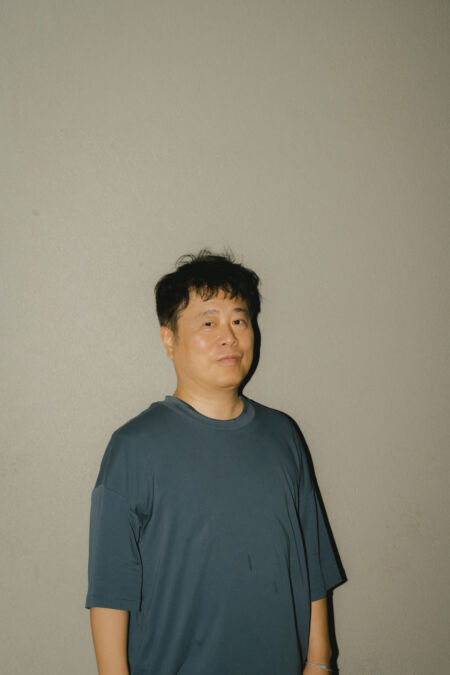
The relationship between the two sets of expressions and the “sea”
-How do you think HMBC’s album “Days of the Ocean Waves” reflects the definition and essence of Balearic?
Yamazaki: This time, we talked about “Let’s stop thinking about genres when making songs.” For example, if we say “Let’s make this song disco-like,” there can be a discrepancy in what each of us thinks of as “disco.” So, instead of genres, we talked about the image of the song that we imagined, such as “It feels like it fits a sunset beach.” I think this idea was very effective in making our music into a Balearic sound image.
–Calm’s music is often described as “Balearic,” but do you ever keep Balearic elements in mind when you’re creating?
Calm: I love Balearic music, but I’ve never called my music “Balearic”. So, when I write songs, I set a different theme each time. Like HMBC, I create songs while imagining the scene I want to put into the song – for example, the sea, a sunset, or sometimes my son’s face.
–Earlier you mentioned the definition of Balearic as “playing music that fits the atmosphere of the place,” but how has growing up in Zushi influenced HMBC’s musical style?
Miyano: I grew up on the mountain side of Zushi, so when I write songs I often imagine the ocean view from the mountains. Rather than simply being a seaside town, I have the impression that Zushi is a town with mountains, greenery, and the ocean.
Zushi is not an upper town like Chigasaki or Fujisawa, which are representative of the Shonan area, but rather a calm town. It feels humid rather than dry. I grew up in such a town, so I like a little damp music, and one of the reasons I started HMBC was that there were no events in my hometown where I could listen to that kind of music.
Yamazaki: Now that all of our members live in Tokyo, I think we can imagine “Zushi” a little more objectively. I think each member has their own differences, but for me, when I imagine the sea, the first thing that comes to mind is the sea in my hometown. In that case, the music we make and the memories we had as teenagers in our hometown are inevitably inseparable.
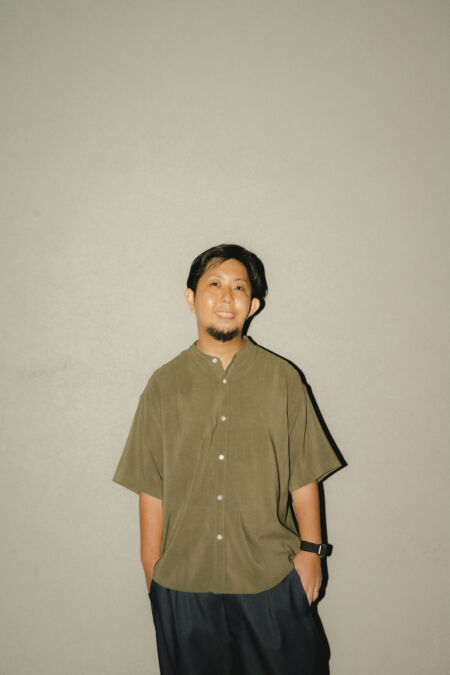
–The theme of the album is “days spent near the sea.”
Yamazaki: Basically, we capture the moments that move us, like when we’re walking on the beach at sunset or the sea at night, and turn them into songs, so the motifs that come to mind are often memories of spending time near the sea. So, it felt right to look back on our days as the theme of this album as well.
Asakura: But this time, we didn’t just think about our local beaches, we also thought about other beaches we’ve visited. It wasn’t made entirely out of nostalgia, but also with a certain degree of reference to public images.
–Have you ever written a song inspired by the ocean?
Calm:In that case, I sometimes use the nature of Yakushima, which I love, as a motif. For the natural cycle of Yakushima, the sea is both the beginning and the end. When I write songs with the sea as a theme, I keep that in mind and often structure the intro and outro of the song so that they can be taken as either the beginning or the end.
–For all of you at HMBC, are there any of Calm’s songs that make you feel like you’re at the sea?
Yamazaki:I don’t feel the ocean directly, but I was really inspired by Calm’s best album “Mellowdies for Memories… Essential Songs of Calm.” When I first heard it, I was in the jazz club at university, so I was really interested in the jazzy sound approach.
Yamazaki: For example, while there are many phrases that sound like live instruments such as saxophone and piano, there are also synth arpeggiators and pad sounds, and the way the band and electronic music blend together well felt very fresh. Influenced by that, I’m conscious of how to make the programmed parts in HMBC songs sound organic, and when I’m having trouble with that, I always refer to Calm’s songs.
Calm:I’m not good at making typical music. For example, jazzy hip-hop and house music were popular in Japan for a while, but I thought it was a little different for me to get into that genre head-on. It’s because I’m such a contrarian that my music is hard to categorize. But, as Yamazaki pointed out, I try to strike a good balance between combining live sounds and programmed sounds.
–The album was impressive for its fusion of various elements, including AOR atmosphere, tropical rhythms, psychedelic guitar, ambient, and human-powered techno. How did you decide on the direction of the sound design?
Yamazaki:In terms of sound design, the contribution of Saito “JxJx” Jun of YOUR SONG IS GOOD, who participated as a producer, was significant.
Our previous works had a few more sounds, but when we entered the studio after the COVID-19 pandemic, we wanted to focus again on the fun of playing live with everyone. So, the idea of making use of the live sounds of the instruments to a certain extent came up. For example, in the electronic parts, we went from the “anything goes” state we had been in until then to searching for sounds that matched the live sounds, and we gradually determined the direction. The synth sounds that Asakura uses were also narrowed down considerably during the production process.
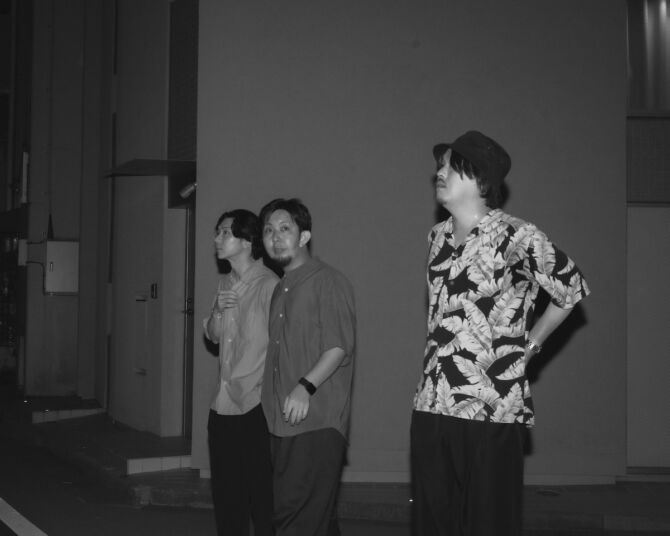
The aesthetic of minimalism that brings out the groove
-How have you been progressing with your production since releasing “Glare EP” last year?
Yamazaki: Glare EP was originally created with an eye on an album, so I started thinking about what songs were missing after completing it. The reason songs like “Remain in Brightness,” which has a single chord and a dance music feel, and “Tide Loop,” which has a slower BPM, were born was because I was thinking about the overall balance.
“Tide Loop” is a so-called lo-fi hip-hop type song, but in order to make it more unique and not a typical song, we consulted with Mr. Saito and created it using alternative chords that weren’t too jazzy.
Miyano: Personally, I think that through the production of “Glare EP,” each member found a sound and methodology that is unique to HMBC. As a result, as Yamazaki said, even if it’s something that seems like lo-fi hip-hop, we can now take our own unique approach.
Asakura: That’s right. Once we had a clearer sense of where we stood as a band, it became clear to me what approach I should take. As a result, I think the band’s sound naturally became more unified.
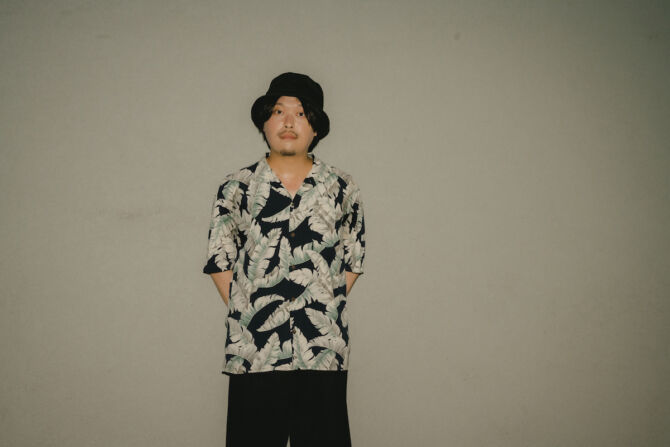
–Are there any points or songs in which producer Saito’s advice or opinions were strongly reflected?
Yamazaki: This album was completed through the accumulation of advice from Mr. Saito, so there are many parts that reflect his advice. Personally, the advice that impressed me the most was the advice to develop loops with subtle changes in the sounds of live instruments.
Another thing is to adjust the other instruments to fit the part of the song that has the most pleasant groove. When trying to create a sense of groove in a band, it tends to be an addition, but I really learned a lot from the advice to not do something strangely difficult, but rather to subtract.
–Calm, how do you usually capture groove when composing music?
Calm: If the groove is too strong, your ears will be drawn to it and it will have a stronger impact than the other sound elements. So, in my case, I first think about how I want the song to sound, and then I try to balance the whole song from there.
But, since I generally want people to hear the overtones and chords, I don’t emphasize the groove, but rather, as I mentioned earlier, I tend to go along with it. On the other hand, when I consciously create dance music, I put more emphasis on the groove and bring the overtones and chords closer to it.
Asakura: As the person in charge of the sequences, I tried to make it as less of a programmed feel as possible. For example, as Yamazaki mentioned earlier, by making loops with subtle changes in the sounds of live instruments, I think this album has become a more human work than the previous one. I think that by adding sequences to it, it has a Balearic feel like Ibiza dance music.
Yamazaki: The recording of the live instruments was done in one take, so I tried not to correct the groove later as much as possible. Of course, when I combined it with the sequence, it was absolutely necessary that it had a proper groove, but even if the performance was a little unstable, I used it as it was if it sounded comfortable.
So, I practiced a lot, especially the rhythm section parts, to perfect them. The quality of those parts has improved compared to before, and I think that directly relates to the quality of the whole album.
Asakura:Yamazaki and Tsuzuki practiced a lot in the studio.
Yamazaki: While thinking about the value of playing with acoustic instruments, I initially tried to get a synthesizer-like sound for the bass, but in the end I adopted a flatwound, which has a sound similar to that of a wooden bass. Thanks to that, the sound became short and choppy, and although it didn’t have the wide range of a synthesizer, it was soft and pleasant, like a rubber ball.
I was conscious of the rawness of the drums, including adding lots of small ghost notes. Calm’s live album at LIQUIDROOM (“MILESTONE-MOONAGE ELECTRIC QUARTET 2000.8.26 LIQUID ROOM”) was a great reference for me, as the drums were jazz-like.
–You said that you produced the album with the determination to “make another first album as an instrumental band,” but how did the production process change as a result of becoming an instrumental band?
Asakura: The biggest change was that each member started making demos using outtakes that weren’t used. Materials and ideas that we didn’t know what to do with, but that would be a waste to leave as they were, are incorporated throughout this album.
–Calm, do you use a different method when composing vocal songs and instrumental songs?
Calm: In my case, I think of vocals as an instrument, so I don’t really change the way I compose. However, with vocal songs, the lyrics inevitably make the song stand out. There’s nothing I can do about that, so I try to adjust the balance in the mix. In my case, I don’t make the vocals stand out like in J-POP.
Asakura: Our album also contains vocal material, but the volume balance has changed from our previous work. It’s more like texture, and sounds like it’s in the background of the sound. Our approach to that aspect has changed since we became an instrumental band.
–Mr. Matsui Izumi from YOUR SONG IS GOOD also participated in the album as a guest percussionist. Can you tell us how that came about?
Yamazaki: When we released “Vibrant Sun” in 2022, Saito told me that Matsui had praised the song. That led to him participating in the production of “Glare EP”.
Miyano: During the recording, Matsui-san brought a lot of percussion instruments. I was amazed at how well he and Saito-san worked together and how quickly he understood the directions he was given.
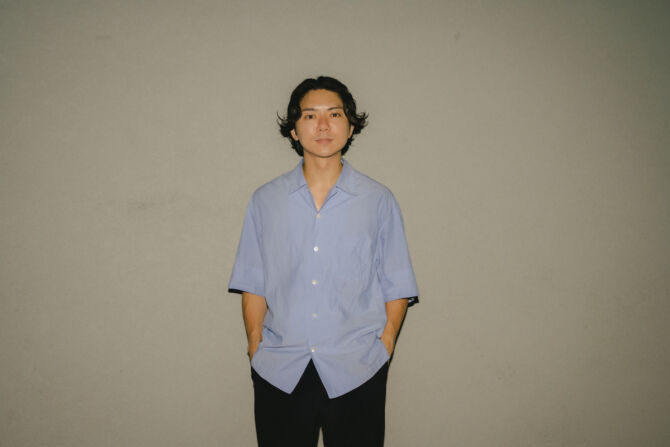
–You mentioned earlier that percussion is one of the characteristics of Balearic music. What are your particular preferences when it comes to percussion, Calm?
Calm: Sometimes I use sampled sounds, and sometimes I use live sounds. When I record it myself, I make it how I like, but when I’m doing a session, I usually just give a certain amount of image and leave it up to the player. But because percussion leaves a strong impression when you hear it, sometimes I decide not to include it if I want it to sound simple. But on the other hand, there are also times when it’s better to include it just because it’s simple, so it’s difficult to find the right balance.
Also, percussion has a strong impact even though the decay (decay) is not that long, so it’s difficult to mix. That’s why I often think about whether to increase the number of drum patterns or add percussion instead. However, I think subtraction is still important when making songs. When you’re young, you tend to think about songwriting in terms of addition, but as you get older, you gradually understand the importance of subtraction. I think it’s important to be aware of that.
The potential of Japan’s unique Balearic
–Calm, how do you think the Japanese climate and culture brings uniqueness to the Balearic sound?
Calm: I think Japanese music, not just Balearic, is very unique. To give an easy-to-understand example, Koreans are very good at incorporating American music. It is precisely because they can completely make it their own that they are able to create works like BTS that are huge hits in the US. On the other hand, Japanese people are good at imitating things from overseas, but for better or worse, they always add their own unique touch somewhere. For a long time, this has meant that Japanese music has not been well received overseas. However, since anime songs have spread around the world, I feel that Japanese uniqueness is slowly being accepted.
–What kind of impact do you think the emergence of bands like HMBC has had on the Balearic scene in Japan?
Calm: I don’t think the Balearic genre has yet gained enough acceptance in Japan to be able to say it’s been established. But I feel like if people find out about HMBC, a new scene like that might emerge, and things could get interesting in the future. Considering that people overseas are starting to accept uniquely Japanese music, such as anime songs and city pop, I think there’s a chance they might be interested in “Balearic sub-genres” of music that originated in Japan.
-Finally, please tell us about your enthusiasm for the release party in September.
Yamazaki: Of course we want to do our best at our own live shows, but we also want to create an experience where people who come to see us think, “The party was fun,” rather than, “The HMBC show was great.”
We don’t want to have an event like that in live music venues, where you only focus on the stage during the live performance and the rest of the time is “waiting time”. We want to have a party, so we are conscious of creating a fun space from start to finish, including the passage of time. With that in mind, this time we will have Calm, who we love, Ogawa & Tokoro, and Ryota Tanaka, a writer who has been helping us since the beginning of the band, perform as DJs. We plan to start a little before sunset, but OPPA-LA is a venue where the scenery changes a lot as time passes, so we would like you to come and enjoy it from an early time.
Calm: I’ve been hosting DJ parties for many years, but I always think, “It’s okay if the DJ is invisible to the audience.” The reason is that at many DJ parties, the audience seems to worship the DJ as something different from themselves, something above them, and I feel uncomfortable with that. I want to create a party where everyone is on an equal footing, without that kind of thing, and in that sense I really sympathize with the concept of HMBC’s parties. I’ll do my best as a DJ on the day so that I can meet their expectations.
[Release Information]
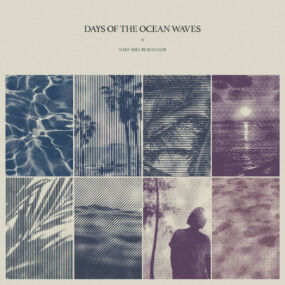
Half Mile Beach Club “Days of the Ocean Waves”
Release Date:2024.08.02 (Fri.)
Label: P-Vine
Tracklist:
1. Sugar Vista
2. Remain in Brightness
3. Flowing
4. Drifted
5. Tide Loop
6. Turquoise Route
7. Vibrant Sun
8. Reef Chorus
9. All Sunlight Must Fade
[Event Information]
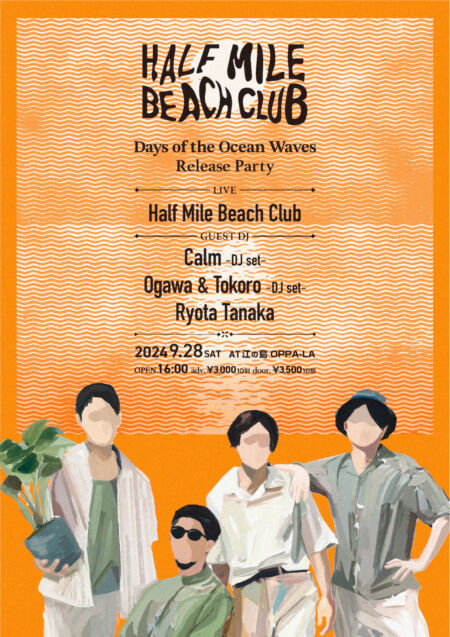
““Days of the Ocean Waves” Release Party”
Date and time: Saturday, September 28, 2024 OPEN & START 16:00 / CLOSE 22:00
Venue: OPPA-LA, Enoshima, Kanagawa
Price: ADV. ¥3,000 / DOOR ¥3,500 (1 drink fee for each separately)
Cast:
(LIVE)
Half Mile Beach Club
(GUEST DJ)
Calm (DJ set)
Ogawa & Tokoro (DJ set)
Ryota Tanaka

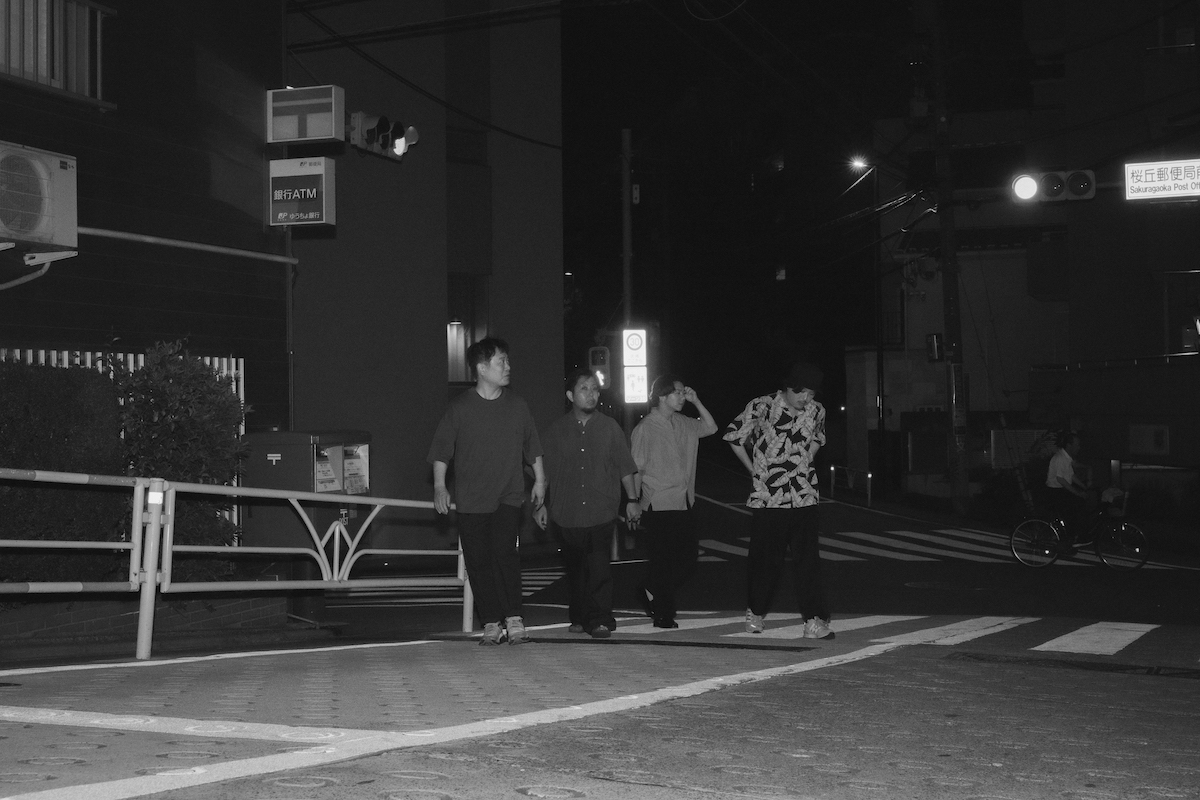
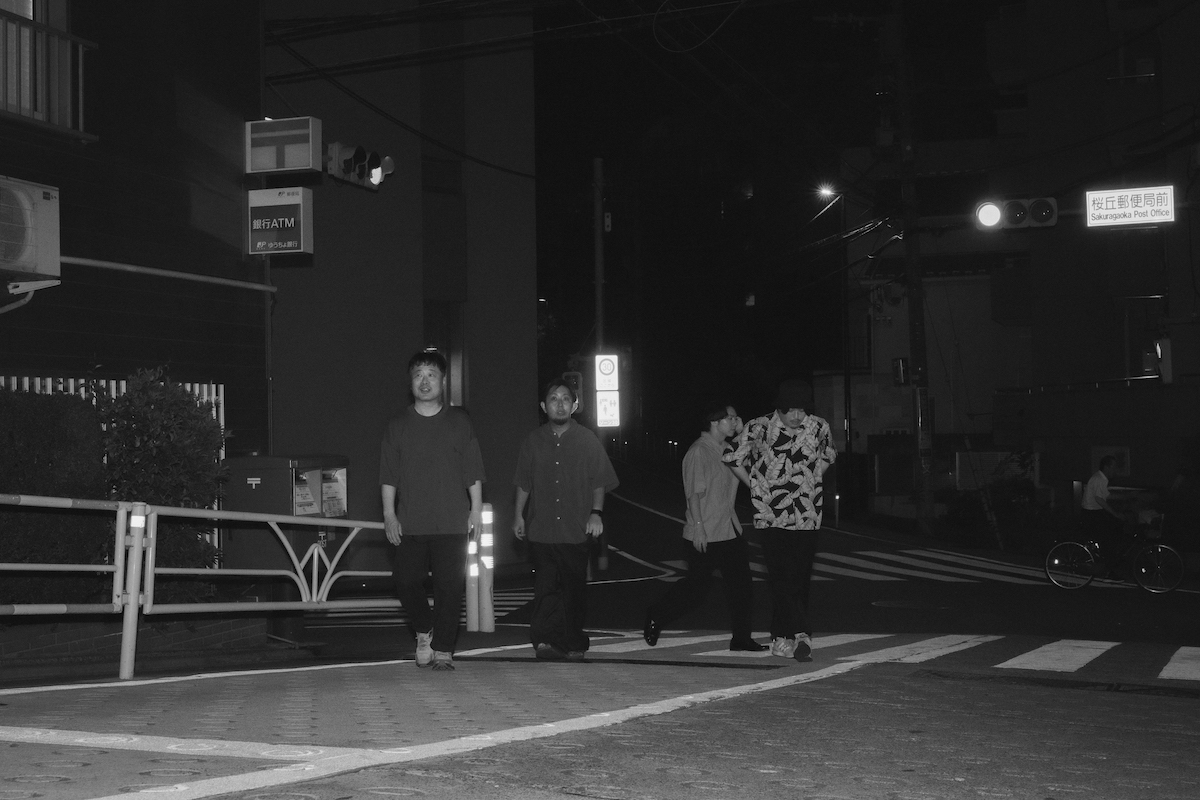




![[Naoki Takeshi]Recalls the fight scene with Ban Nakamura: “It was terrifying”[100 Seconds of Fist – Battle Royale]](https://tokytunes.com/wp-content/uploads/2024/09/1725717815_Naoki-TakeshiRecalls-the-fight-scene-with-Ban-Nakamura-It-was-768x513.jpg)









